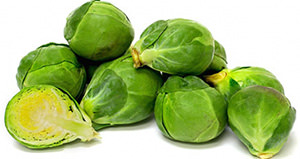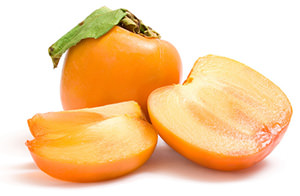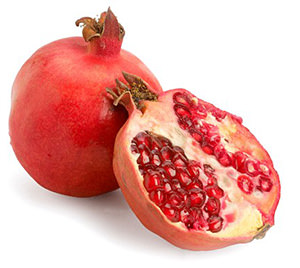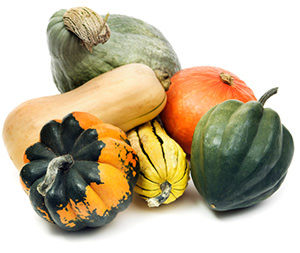
Fall Produce Guide
Posted on 05 Sep, 2020

As the weather starts to get colder and the leaves start to fall, new produce can be seen all around your local farmer’s market. Here’s a guide of what to look for this fall.
Apples
 Apple season is beginning and the possibilities are endless. From a crisp, tart granny smith to a sweeter than candy fuji apple, there will be no shortage at the farmer’s markets. Always look for apples that are firm and heavy for their size. If you are buying them from a farmer’s market, the skin may not be smooth, but there shouldn’t be any holes or dents in the skin.
Apple season is beginning and the possibilities are endless. From a crisp, tart granny smith to a sweeter than candy fuji apple, there will be no shortage at the farmer’s markets. Always look for apples that are firm and heavy for their size. If you are buying them from a farmer’s market, the skin may not be smooth, but there shouldn’t be any holes or dents in the skin.
Beets
 Beets can often be found from fall until spring, but the freshest beets are found during fall. When looking for fresh beets, only choose the ones with no soft spots and relatively even color. Beets can be deep red, golden, or be striped with red and white, called candy cane beets. If you can, choose beets with the greens still attached. If the greens look fresh, then the beets are fresh. These greens will last a few days and can be eaten fresh or cooked. Once the greens are removed, the beets should last a couple of weeks in the refrigerator.
Beets can often be found from fall until spring, but the freshest beets are found during fall. When looking for fresh beets, only choose the ones with no soft spots and relatively even color. Beets can be deep red, golden, or be striped with red and white, called candy cane beets. If you can, choose beets with the greens still attached. If the greens look fresh, then the beets are fresh. These greens will last a few days and can be eaten fresh or cooked. Once the greens are removed, the beets should last a couple of weeks in the refrigerator.
Broccoli Rabe
 A cruciferous vegetable similar to broccoli, broccoli rabe has florets but they do not for a head like broccoli. Look for broccoli rabe with an even deep green color and tightly closed florets. Avoid any with yellowing leaves or open florets. Broccoli rabe with last about five days in the fridge before it begins wilting and yellowing.
A cruciferous vegetable similar to broccoli, broccoli rabe has florets but they do not for a head like broccoli. Look for broccoli rabe with an even deep green color and tightly closed florets. Avoid any with yellowing leaves or open florets. Broccoli rabe with last about five days in the fridge before it begins wilting and yellowing.
Brussel Sprouts
 If someone tells you they don’t like Brussel sprouts, they have never tried a fresh Brussel sprout cooked properly. When shopping, look for tiny, tightly packed sprouts that have a vibrant green color. The smaller the sprout, the more tender they will be, giving the best prepared texture. When cooking, make sure to not overcook them, instead cooking until they have a slight crunch with every bite or try them raw in a shaved Brussel sprout salad!
If someone tells you they don’t like Brussel sprouts, they have never tried a fresh Brussel sprout cooked properly. When shopping, look for tiny, tightly packed sprouts that have a vibrant green color. The smaller the sprout, the more tender they will be, giving the best prepared texture. When cooking, make sure to not overcook them, instead cooking until they have a slight crunch with every bite or try them raw in a shaved Brussel sprout salad!
Cauliflower
 Coming a wide variety of colors, the most common color of cauliflower is white. When purchasing, look for even colored skin and a firm texture. The leaves should look fresh indicating that the cauliflower has been picked recently. If you want to add some extra color to a dish, try yellow, green, or purple cauliflower for that pop of color.
Coming a wide variety of colors, the most common color of cauliflower is white. When purchasing, look for even colored skin and a firm texture. The leaves should look fresh indicating that the cauliflower has been picked recently. If you want to add some extra color to a dish, try yellow, green, or purple cauliflower for that pop of color.
Celery
 Celery is sold year round, but it’s often the best tasting when harvested in fall. The stalks should be straight and firm with fresh looking leaves. I find that celery often becomes wilted quickly in the fridge, so if that happens, cut the celery and place it in water. In a couple of hours, the celery should be firm and crunchy again.
Celery is sold year round, but it’s often the best tasting when harvested in fall. The stalks should be straight and firm with fresh looking leaves. I find that celery often becomes wilted quickly in the fridge, so if that happens, cut the celery and place it in water. In a couple of hours, the celery should be firm and crunchy again.
Cranberries
 Fresh cranberries are tarte but absorb favor and sweeten wonderfully once cooked. Cranberries are a fall time staple, but many buy prepared cranberries instead of fresh. If you can find them, look for plump, red berries with a firm feel. These can be used to make the traditional cranberry relish served at Thanksgiving!
Fresh cranberries are tarte but absorb favor and sweeten wonderfully once cooked. Cranberries are a fall time staple, but many buy prepared cranberries instead of fresh. If you can find them, look for plump, red berries with a firm feel. These can be used to make the traditional cranberry relish served at Thanksgiving!
Fennel
 In season from fall to early spring, fennel is a bulbous vegetable often used in slaws or salads. Fennel is crunchy with a taste similar to black licorice. Avoid any bulbs with brown spots or a soft texture. Fennel should be firm with smooth white skin. If serving fennel in a salad, make sure to cut it very thinly, like one would shave Brussel sprouts.
In season from fall to early spring, fennel is a bulbous vegetable often used in slaws or salads. Fennel is crunchy with a taste similar to black licorice. Avoid any bulbs with brown spots or a soft texture. Fennel should be firm with smooth white skin. If serving fennel in a salad, make sure to cut it very thinly, like one would shave Brussel sprouts.
Figs
 While these tiny fruits may be pricy, they are delicious. To find the best figs, feel for ones that have a slight give, much like you would to find a ripe plum. There are many varieties of figs, with skins ranging from a dark almost black color to a light green, each having their own unique flavor profile. Since figs do not ripen well once they have been picked, look for already ripe figs and eat them fast, because they do go bad quickly.
While these tiny fruits may be pricy, they are delicious. To find the best figs, feel for ones that have a slight give, much like you would to find a ripe plum. There are many varieties of figs, with skins ranging from a dark almost black color to a light green, each having their own unique flavor profile. Since figs do not ripen well once they have been picked, look for already ripe figs and eat them fast, because they do go bad quickly.
Grapes
 There many varieties of grapes, with colors ranging from greenish yellow to a deep purple. Regardless of skin color, look for plump, firm grapes for the best crunchy texture. The color of the skin should be even with little to no blemishes. Grapes can be eaten fresh by themselves or go well cut and added into a salad.
There many varieties of grapes, with colors ranging from greenish yellow to a deep purple. Regardless of skin color, look for plump, firm grapes for the best crunchy texture. The color of the skin should be even with little to no blemishes. Grapes can be eaten fresh by themselves or go well cut and added into a salad.
 Sweetest when harvested in cold weather, kale is sweetest during fall and winter harvests. Look for kale with a deep green color with some varieties having some deep purple on the tips and stalks. Kale should not be wilted or yellowing when purchasing. The leaves can be either curly or flat depending on the variety and each variety has their own unique flavor.
Sweetest when harvested in cold weather, kale is sweetest during fall and winter harvests. Look for kale with a deep green color with some varieties having some deep purple on the tips and stalks. Kale should not be wilted or yellowing when purchasing. The leaves can be either curly or flat depending on the variety and each variety has their own unique flavor.
Mushrooms
 Most wild mushroom come into season late summer to early fall and come in a slew of varieties. When buying fresh mushrooms, search for unbruised firm mushrooms with even coloring. Turn them upside down and ensure that the gills are tightly packed together and not open. Store them in a paper bag in the fridge but try to use them within a couple of days. If the mushrooms start to dry out, use them in a cooked dish to rehydrate them instead of eating them raw.
Most wild mushroom come into season late summer to early fall and come in a slew of varieties. When buying fresh mushrooms, search for unbruised firm mushrooms with even coloring. Turn them upside down and ensure that the gills are tightly packed together and not open. Store them in a paper bag in the fridge but try to use them within a couple of days. If the mushrooms start to dry out, use them in a cooked dish to rehydrate them instead of eating them raw.
Parsnips
 Ever wonder what those big white carrots are? They’re parsnips! With a sweet flavor once roasted, these root vegetables are an interesting addition to any diner party. Look for parsnips that are very light, with little to no browning at the root. Avoid thick parsnips as they often have woody centers. Instead search for long, thin parsnips.
Ever wonder what those big white carrots are? They’re parsnips! With a sweet flavor once roasted, these root vegetables are an interesting addition to any diner party. Look for parsnips that are very light, with little to no browning at the root. Avoid thick parsnips as they often have woody centers. Instead search for long, thin parsnips.
Pears
 Depending on the variety, fall is the peak time for pears! Regardless of the color of the skin, they should have an even coloring with no bruising. Store the pears on the counter and wait to eat when they smell fragrant and sweet.
Depending on the variety, fall is the peak time for pears! Regardless of the color of the skin, they should have an even coloring with no bruising. Store the pears on the counter and wait to eat when they smell fragrant and sweet.
Persimmon
 With a short season of fall to early winter, these sweet fruits look similar to tomatoes. There are a few varieties of persimmons but in general, fruits should have even coloring with fresh looking leaves. Some persimmons have a high concentration of tannins so they must be eaten when they are extremely soft, almost pudding-like on the inside. On the other hand, some varieties can be eaten when hard and crunchy, like an apple. Ask the vendor at the farmer’s market for the best time to eat their variety of persimmon.
With a short season of fall to early winter, these sweet fruits look similar to tomatoes. There are a few varieties of persimmons but in general, fruits should have even coloring with fresh looking leaves. Some persimmons have a high concentration of tannins so they must be eaten when they are extremely soft, almost pudding-like on the inside. On the other hand, some varieties can be eaten when hard and crunchy, like an apple. Ask the vendor at the farmer’s market for the best time to eat their variety of persimmon.
Pomegranate
 Perfect for topping salads or roasted vegetables, there plump arils are sure to impress any of your dinner guests. When choosing pomegranates, look for angular shaped fruits that feel heavy for their size. Disregard the rind color, as is can range from dark brownish red to a bright red color with no change in ripeness. Packed with antioxidants, these fruits are great additions to anyone’s diet!
Perfect for topping salads or roasted vegetables, there plump arils are sure to impress any of your dinner guests. When choosing pomegranates, look for angular shaped fruits that feel heavy for their size. Disregard the rind color, as is can range from dark brownish red to a bright red color with no change in ripeness. Packed with antioxidants, these fruits are great additions to anyone’s diet!
Sweet Potatoes
 Often referred to as yams, most of the yams sold in the United States are actually sweet potatoes. Sweet potatoes come in a wide range of colors and flavors. Skin colors can be dusty orange, bright red, white, or even purple. The flesh can be white, yellow, various shades of orange, and purple. When choosing sweet potatoes, look for small to medium potatoes that feel heavy for their size. Use sweet potatoes within a week of purchasing for the best flavor and texture. If looking for a healthy dessert, try roasting with pure maple syrup and cinnamon!
Often referred to as yams, most of the yams sold in the United States are actually sweet potatoes. Sweet potatoes come in a wide range of colors and flavors. Skin colors can be dusty orange, bright red, white, or even purple. The flesh can be white, yellow, various shades of orange, and purple. When choosing sweet potatoes, look for small to medium potatoes that feel heavy for their size. Use sweet potatoes within a week of purchasing for the best flavor and texture. If looking for a healthy dessert, try roasting with pure maple syrup and cinnamon!
Winter Squash
 Winter squash includes pumpkins, butternut squash, acorn squash, and many more. These squashes are wonderful roasted and have lovely shades of orange flesh.When purchasing, look for squash that are firm and heavy for their size. The skins should have no bruises or gashes.These winter squashes will keep for months stored in a cool, dry place. Try out all the varieties available and find your new favorite! Mine are buttercup squash, they taste like a mix between a sweet potato and a sugar pumpkin!
Winter squash includes pumpkins, butternut squash, acorn squash, and many more. These squashes are wonderful roasted and have lovely shades of orange flesh.When purchasing, look for squash that are firm and heavy for their size. The skins should have no bruises or gashes.These winter squashes will keep for months stored in a cool, dry place. Try out all the varieties available and find your new favorite! Mine are buttercup squash, they taste like a mix between a sweet potato and a sugar pumpkin!
Great Guides For Eating Healthy

by Del Sroufe

by Robin Jeep

by Jo Robinson

by Jonny Bowden

 Intelligent Ways To Lose Fat
Intelligent Ways To Lose Fat How Long Before Bedtime Should I Have My Last Coffee?
How Long Before Bedtime Should I Have My Last Coffee? Dangerous Foods That Are Actually Good For You
Dangerous Foods That Are Actually Good For You Pulses - What are they and why you should be eating them!
Pulses - What are they and why you should be eating them!










